History
The Foundation traces its root to the indemnities paid by the Ching Dynasty to eight foreign powers, including the Unites States. The indemnities were in compensation for the Boxers’ killing of many foreign embassy staff members and missionaries in 1900. In capitulation, the Ching Government agreed to pay an enormous sum of indemnity to the eight nations involved. The United States received a 7% share of the total compensation. However, American diplomats, educators and missionaries in China lobbied the U.S. government to remit a portion of indemnities back to China to promote education there. The effort bore fruit in 1908, when President Theodore Roosevelt signed into law the first remission of the indemnities to fund a school to send Chinese children to the Unites States for advanced study. The National Tsing Hua University was established with the financial support of this fund, which is still known as the Tsing Hua University Fund. The American friends who lobbied for this fund were happy with the result and urged the U. S. government to make a second remission to China for the promotion of science and culture. The major promoters included Senator Henry Cabot Lodge, Professor Paul Monroe of Columbia University, and Miss M. E. Wood, a missionary in China. As a result of their efforts, President Calvin Coolidge signed into law in 1924 the grant of just over US$12.5 million funded by the remittances over the period of 1917 to 1940. This represented a large sum at the time. The reparation was made by a joint resolution of the 68th Congress, approved on May 21st, l924. With this, the Chinese government appointed 10 Chinese and 5 Americans to form a board of trustees, with a constitution stipulating that the board is self-perpetuating. This guaranteed its future independence from government interference, a prescient stipulation. Thus, for more than ninety years, the China Foundation has been a symbol of the friendship of the American government and its people to the Chinese. Throughout that period and continuing today, the Foundation has carried out its mission by fostering the development of Chinese education and culture.

Main Entrance of the Offfice in Peking
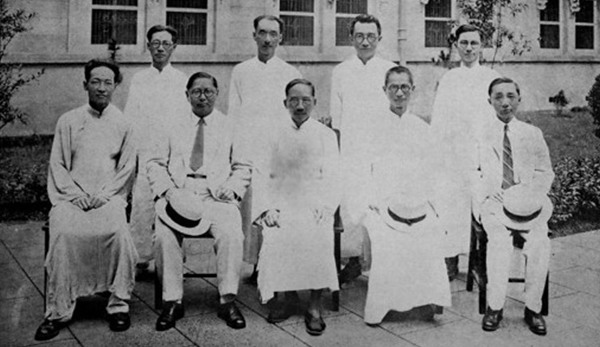
Sixth Annual Meeting in Nanking, 7-2-1930
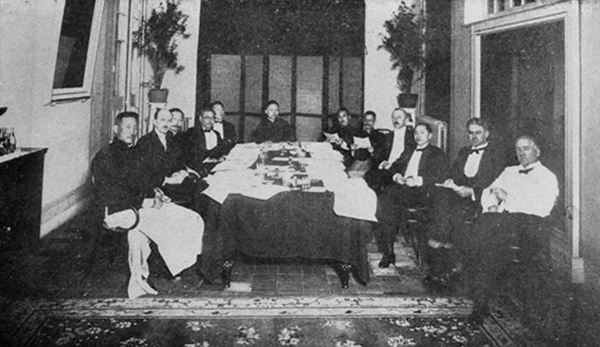
First Annual Meeting, 6-24-1925
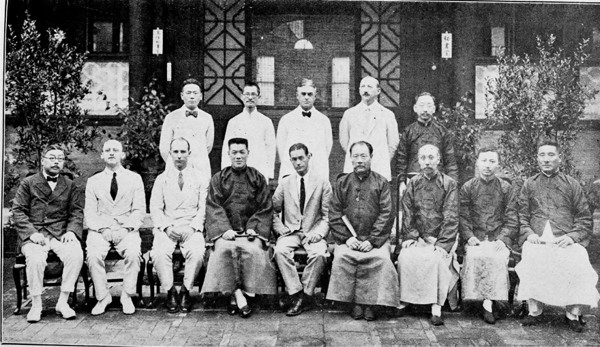
Formal Opening of the Office, 7-28-1925
Activities and Accomplishments
(一)First Period (1924 – 1949)
With the first installments received, the Foundation helped save National Peking University from the brink of financial collapse, through payroll subsidies to its teachers and staff. The Foundation single-handedly established the National Library of Peiping, by funding its building and the purchase of rare books. The Foundation conducted social surveys and soil surveys in China. It provided science fellowships in teaching colleges. It gave grants and subsidies to 233 universities and colleges, 139 research institutes and 147 cultural and other organizations. The Foundation provided science research professorships and fellowships for prominent professors and outstanding young professors, to conduct research domestically and abroad, especially in the United States. Most of the important professors in China during this period received grants from the Foundation.
(二)Second Period (1950 – 1970)
After the Communists took control of mainland China in 1949; the Foundation’s assets lost most of their value. With this small sum, the Foundation nevertheless was able to play an important role in subsidizing education in Taiwan, during a period when the Government was so short of foreign exchange. The Foundation provided research grants and fellowships to various universities and cultural institutions, with total payments of about US$1 million during the period.
(三)Third Period (1971 – Present)
As Taiwan’s economy took off, the government’s resources relative to the Foundation increased dramatically. The Foundation refocused its activities toward areas without sufficient government subsidies, such as the short-term visit program at the National Science Council. During this period, the Foundation provided more than US$5 million for various grants. Eventually, the Council acquired sufficient budget to fund the program itself. At present, the Foundation administers the following ongoing grants: Fu Ssu-nien Memorial Chair at National Taiwan University, Dr. Hu Shih Memorial Chairs at the Academia Sinica, the Institute of International Relations at National Cheng Chi University, and the Institute of Microbial Biology, Academia Sinica. From 2005 to 2018, travel grants to faculty members and PhD candidates to presenting papers in international conferences had been offered.
Organization
The Foundation is governed by the Board of Trustees, that consist of eleven Chinese and four Americans. The board meetings are held semi-annually, in May and in October or November. To save expenses, the May meeting is only attended by Chinese trustees, while the fall meeting is attended by all trustees. The fall meeting is considered more important, as major decisions such as election of new trustees are usually decided at that time.
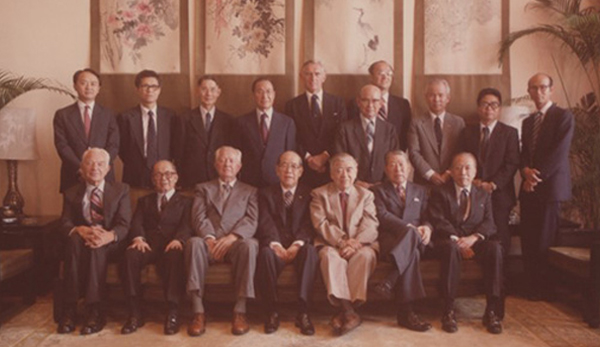
45th Annual board meeting,10-16-1981
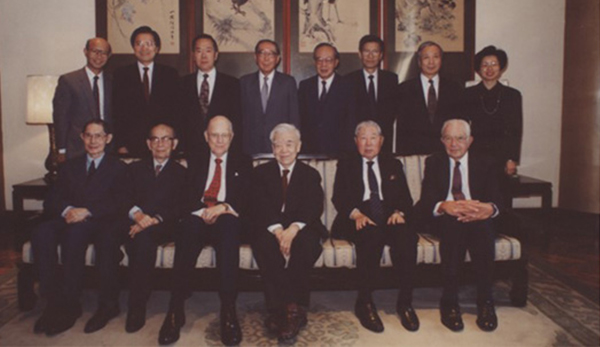
53th Annual board meeting,12-10-1993
Mission
The China Foundation for the Promotion of Education and Culture (henceforth referred to as “the Foundation”) was established in 1924 to have custody and control of the second remission of Boxers Rebellion reparations paid to the United States by China, and to apply these funds for the promotion of Chinese education and culture. In the beginning, the Foundation’s emphasis was on the development and dissemination of scientific education and knowledge in China. Gradually, the Foundation also expanded its work to include cultivating the humanities and social sciences.
Funds Entrusted to the China Foundation
Tsing Hua University Endowment Fund
Tsing Hua University Endowment Fund. Entrusted to the Foundation in 1929.

| The Tsing-Hua University Endowment Fund and other Funds under the Permanent Custody of the China Foundation |
|---|
| 1.The Tsing-Hua University Endowment Fund |
| 2.The Fan Memorial Institute of Biology Endowment Fund |
| 3.The Chinese Social and Political Science Association Library Endowment Fund |
| 4.Mrs. Fan Biological Fellowship Endowment Fund & Ting Ven Kiang Memorial Endowment Fund |
From an overall perspective, the funds entrusted to the China Foundation were well managed. With conservative investment policies, the assets of those funds grew steadily. Some of the funds still had small income to support the educational organizations in Taiwan. For example, the incomes of the Fan Memorial Fund were used to subsidize the Institute of Botany, Academia Sinica. The income from the endowment of the Chinese Social and Political Science Association Library has been used to support the publications and other research activities of the Institute of the International Relations. Among these funds, the Tsing-Hua Fund has been very successful. The assets and incomes of the fund are far larger than the endowment fund owned by China Foundation. Even with heavy losses suffered in 1949, the remaining income-producing U.S. dollar assets are about three times larger than that of the China Foundation Endowment Fund. The fruition of the reactivation of the Tsing Hua University in Taiwan was due mostly to the efficient management of the Tsing-Hua Fund by the China Foundation.